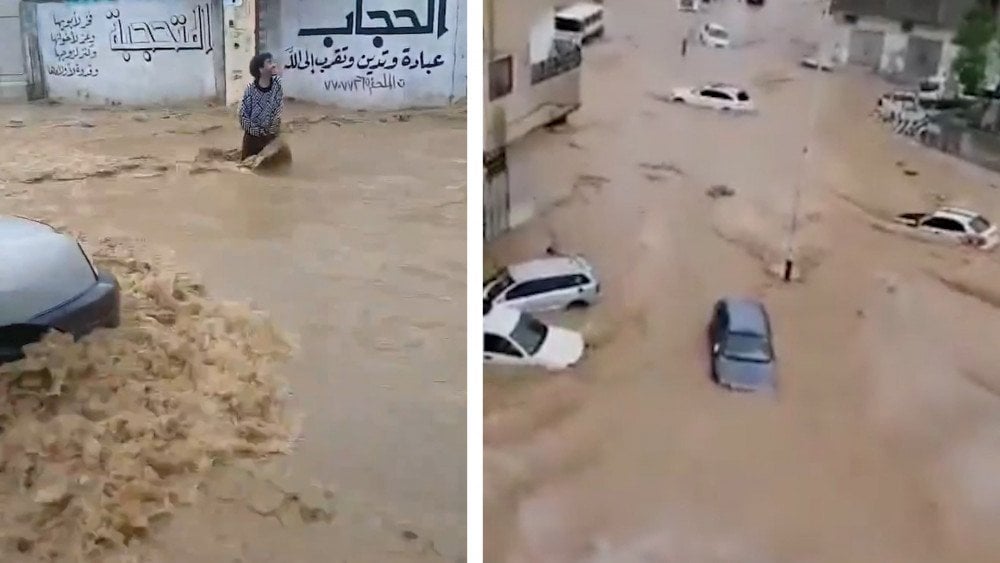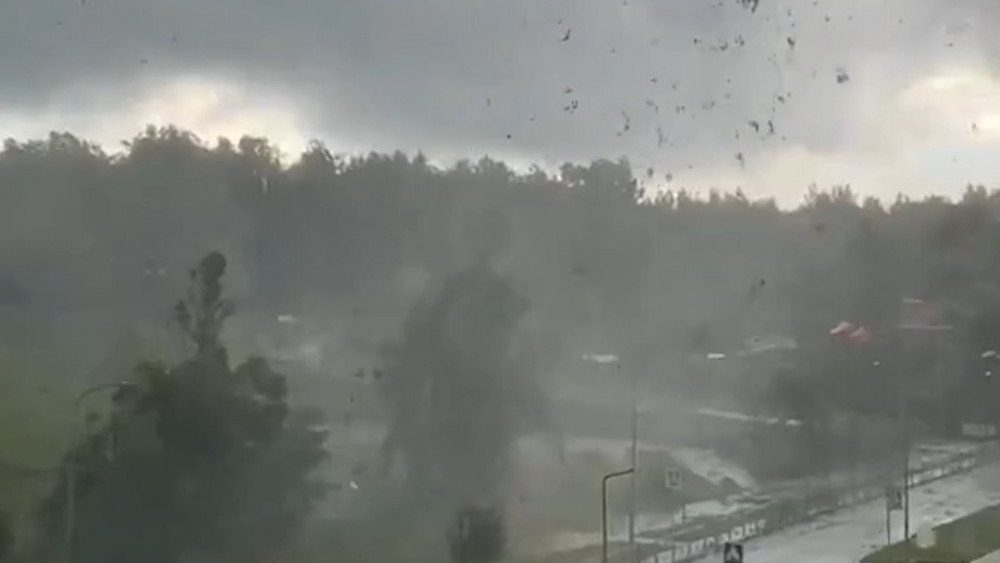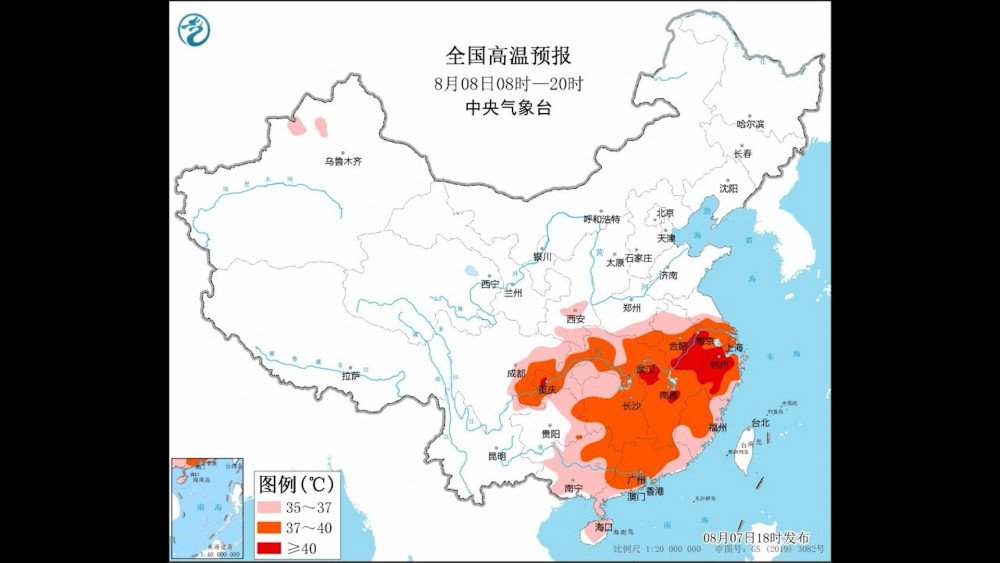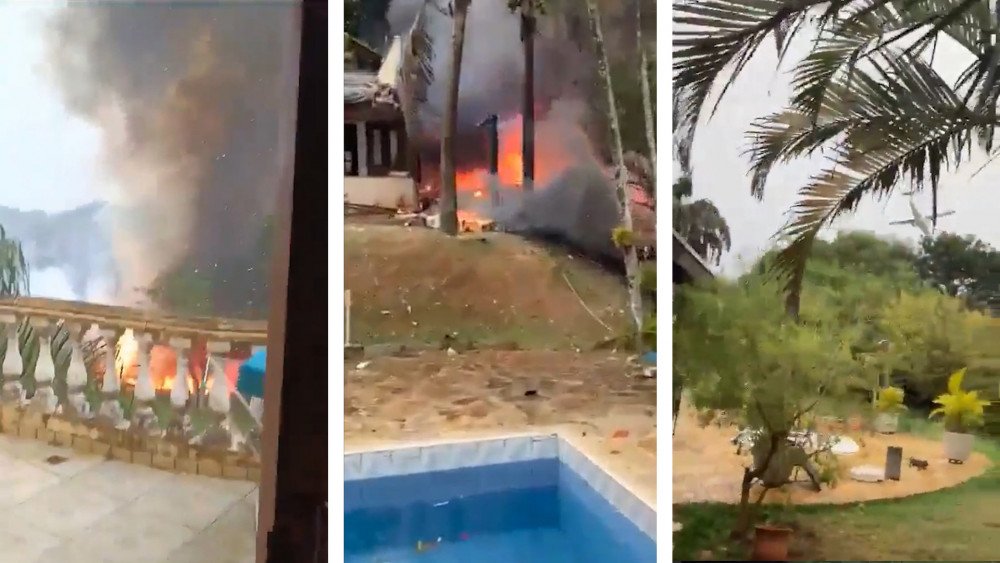Summary of Climate Disasters on the planet from August 7 to August 13, 2024
Greece
On August 11, a severe wildfire erupted in the town of Varnavas, Greece. The flames rapidly engulfed the area. The flames up to 25 meters (82 feet) high, uncontrollably consumed homes, vehicles, and businesses. Unfortunately, one person died.
Due to strong winds, with speeds reaching up to 90 km/h (56 mph), the fire quickly spiraled out of control. Thousands of people were evacuated from the suburbs of Athens.
Regional authorities reported that those who had refused to leave their homes were later trapped, forcing firefighters to risk their lives to rescue them.

A severe fire engulfed a house in Varnavas, Greece
The fire reached the buildings of the National Observatory of Athens, threatening to destroy important equipment and years of research work.
As of August 13, the area burned by the fire exceeds 40,000 hectares (98,842 acres). In addition to homes and property, many animals, including dogs and cats, were burned.
Dozens of aerial vehicles and hundreds of firefighters were unable to contain the blaze. Over 700 firefighters, 199 units of equipment, 17 planes, and 18 helicopters, along with a large number of military personnel and volunteers, were deployed to combat the fire.
Due to the acute shortage of specialists and equipment, Greece sought international assistance.
Multiple wildfires have been raging in Greece since May. Scientists attribute this to a lack of rainfall and abnormal temperatures. The winter and the first two months of summer were the hottest on record in the country.
Egypt and Libya
The regions of the Libyan Desert and southern Egypt are considered some of the driest areas in the world. The average annual rainfall in this region does not exceed half a millimeter (0.02 inches). Lightning is also a rare occurrence here. However, for the third consecutive week, this area has been experiencing rain and thunderstorms.
According to the Arab Meteorological Center, in the Libyan region of Al-Kufra,
46 mm (1.81 inches) of rainfall was recorded in just one hour—an incredible amount for this region.
This is a record amount of rainfall since 1952.

Flooding in the Kufra district, Libya
On August 8 and 9, southern Egypt, including the city of Aswan, also experienced historic rains and floods.
To prevent further flooding, it was decided to open channels to collect the water and direct it into the Nile.
Yemen
In Yemen, sudden floods claimed the lives of 57 people and affected over 34,000 families. The northern and southern regions of the country were the hardest hit. The floods destroyed crops and critical infrastructure, including roads and water supply systems, causing severe damage to the local economy.

Aftermath of sudden floods in Yemen
In the province of Hodeidah, one of the most affected areas, the floods forced over 6,000 families to leave their homes. At least 500 houses were damaged.
Australia
Record-breaking rains hit two states in Australia: southeastern Queensland and northern New South Wales.
In the city of Ballina, New South Wales,
211.6 mm (8.33 inches) of rain fell within 48 hours, which is nearly 2.5 times the average for August
(the average monthly rainfall in Ballina for August is 85.7 mm, or 3.37 inches).

A road submerged due to unusually heavy rains in New South Wales, Australia
In the city of Rockhampton, Queensland, 156.6 mm (6.16 inches) of rain fell in two days, which is almost six times the usual monthly amount (the average monthly rainfall in Rockhampton for August is 26.8 mm, or 1.06 inches).
In Brisbane, the Ekka, the annual agricultural show, which attracts thousands of people from across the country, was interrupted.
Over 100 roads across Queensland were closed due to sudden flooding.
USA and Canada
On August 8, Tropical Storm Debbie struck the USA again. After weakening to a tropical storm, it made landfall on the coast of South Carolina.
Debbie spawned at least 12 tornadoes in states such as Florida, South Carolina, North Carolina, and Virginia.
Typically, tropical storms do not generate powerful twisters, but Debbie
produced a destructive EF3 tornado in Wilson County,
North Carolina. It severely damaged a dozen buildings, one of which resulted in a fatality.

House destroyed by the tornado, USA
Moving slowly northward, the storm released massive amounts of rain along its path.
In North Carolina, some areas received over 350 mm (13.78 inches) of rainfall, leading to sudden floods across the state.
In Pennsylvania and New York, villages were flooded, and roads and homes were destroyed. The flood damage was a shock to the local residents. In Allegheny County, New York, up to 115 mm (4.53 inches) of rain fell. A state of emergency was declared.
In Tioga County, New York, people waited for help on the roofs of their homes. Rescue operations were conducted using helicopters and hovercraft.
On August 9, Storm Debbie reached the southern part of the Canadian province of Quebec. In the city of Montreal,
at least 154 mm (6.06 inches) of rain fell in a single day,
which was described as “unprecedented.”
A new record was set, breaking the previous daily rainfall record
of 93.5 mm (3.68 inches) from 1996.

Cars floating in water, Montreal, Canada
According to a meteorologist from Environment And Climate Change Canada, this was the heaviest rainfall the city has ever experienced. 480,000 consumers were left without power.
Dozens of national and international flights at Montreal-Trudeau Airport were canceled or delayed.
Russia
On August 10, Cyclone Otilia struck St. Petersburg and the Leningrad Region.
The downpour flooded the streets, with water even seeping into the metro. Powerful winds knocked down billboards, uprooted trees, and overturned a Gazelle truck.
In central Saint Petersburg, the intensity of the rain reached 19.99 mm (0.79 inches) in just 20 minutes, which is
three times more than the city's sewer system can handle.
According to the water utilities, the sewer system is overwhelmed if the rainfall intensity exceeds 7.2 mm (0.28 inches) in 20 minutes. The cyclone triggered an abnormal phenomenon for this region.
In Saint Petersburg, as well as in the town of Tosno, the Leningrad Region,
several tornadoes were recorded
(tornadoes are also referred to as waterspouts in the classification by the Russian Hydrometeorological Center).

A tornado rages in Tosno, Leningrad Region, Russia
On the same day, a tornado swept through the village of Bolshaya Murta, in Krasnoyarsk Krai.
The whirlwind tore off roofs from houses, destroyed fences and barns, uprooted trees, toppled power lines, demolished greenhouses, and shattered car windows.
Meanwhile, on August 10, another hailstorm hit Altai Krai. In the town of Troitsk, Aleysky District, some hailstones were the size of chicken eggs.
Kazakhstan
On August 8, a powerful storm with hail struck the capital of Kazakhstan. Astana was quickly covered by massive clouds and heavy rain, with hailstones the size of quail eggs damaging windows and facades of buildings. According to Eurasia Insurance Company, at least 5,000 vehicles were damaged.

A car damaged by hail in Astana, Kazakhstan
People were shocked by the fury of the storm and its aftermath. 2 people contacted the ambulance service with head injuries.
China
Since late July, southern China has been experiencing abnormal heat.

The map showing the regions affected by the heat, China
On August 7, temperatures in eight provinces exceeded 40°C (104°F). In Jiande County, Zhejiang Province, the August temperature record was broken at +42.8°C (109°F).
As of August 11, the extreme heat persisted. Twenty-one meteorological stations broke the August record, and two set absolute records.
The ongoing intense heat posed a serious threat to rice fields and other agricultural crops. And on cars standing in the sun,
the protective film swelled due to the high temperatures.
Although car coatings are designed for harsh outdoor conditions, the extreme heat in China proved too much for them.

The protective film on a car swelled due to the heat, China
Aviation Incidents
Back in April 2023, at the forum “Global Crisis. There is a Way Out”, scientists predicted that due to the emergence of zones of atypical magnetic anomalies, flying would soon become nearly impossible. Unfortunately, this prediction is beginning to come true before our eyes. Air travel is becoming increasingly dangerous.
On August 11, EVA Air flight BR238, en route from Jakarta to Taipei, encountered severe turbulence at an altitude of over 11 km (36,000 feet).
As a result of the incident, six flight attendants were injured. Fortunately, the plane safely landed at its destination.
Another accident in the sky ended in tragedy.
On August 9, a plane bound for São Paulo International Airport in Brazil crashed over a residential area in the municipality of Vinhedo. This was flight 2283 of Voepass Linhas Aéreas, operating the route from Cascavel, Paraná, to Guarulhos, São Paulo.
The aircraft plummeted from an altitude of 5,181.6 meters (17,000 feet) in just one minute.

A plane crashes in the residential area of Vinhedo, São Paulo, Brazil
As a result of the crash, 57 passengers and 4 crew members died, with no casualties on the ground.
A video taken by a witness shows the plane spiraling down in a flat spin.
Aviation expert Lito Sousa stated that he had never encountered a plane crash with such a strange descent trajectory.
Currently, a massive number of climate disasters are occurring around the world. They are becoming increasingly destructive and abnormal. People are undoubtedly noticing this and beginning to wonder why these cataclysms are happening simultaneously across the planet. They are starting to post videos of the anomalies they have experienced themselves and share videos from other witnesses.
Now everything is in the hands of ordinary people who have realized the seriousness of what is happening and can inspire others to take action. We still have a chance to avoid the worst-case scenario, but to do so, the causes of climate change must become the most discussed topic. It all starts with awareness. How quickly this information spreads depends on everyone who hears it.
You can watch the video version of this article here.
Leave a comment